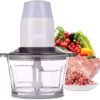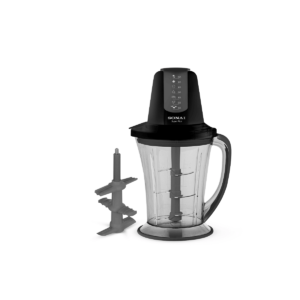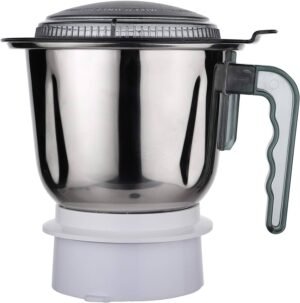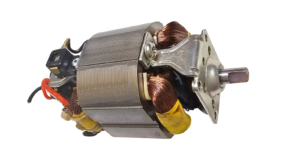Blender Chopper Bowl
₹780.00 Original price was: ₹780.00.₹650.00Current price is: ₹650.00.
Introduction to Blender Chopper Bowls
Blender chopper bowls are essential accessories designed to enhance the functionality of standard blenders. Unlike conventional blender jars, chopper bowls are specifically engineered to perform precise chopping, slicing, and dicing tasks, making them invaluable for a variety of culinary preparations. These bowls typically feature sharper blades and a more compact design, allowing users to achieve desirable results with greater efficiency.
The construction of blender chopper bowls plays a pivotal role in their performance. They are often made from durable materials such as high-quality plastic, glass, or stainless steel. The choice of material affects not only the longevity of the bowl but also its suitability for various tasks. For instance, glass chopper bowls can endure higher temperatures, making them ideal for hot ingredients, while plastic options may offer lightweight convenience for everyday use.
One of the primary advantages of using chopper bowls is their versatility in food preparation. They allow users to easily chop vegetables, herbs, and even fruits with minimal effort, producing consistent results. This ensures that ingredients are evenly processed, which is particularly important in recipes that require uniformity for even cooking or presentation. Furthermore, the design of chopper bowls often includes measurements on the side, facilitating accurate ingredient quantification.
In comparison to standard blender jars, chopper bowls provide a more efficient and user-friendly experience. Their unique capabilities allow for fine chopping and blending without the risk of over-processing. Chopper bowls are not only a time-saving solution but also help to maintain the integrity of delicate ingredients. Overall, incorporating a blender chopper bowl into your kitchen toolkit can significantly enhance the overall food preparation process, making it easier and more enjoyable.
Benefits of Using a Chopper Bowl
The integration of a chopper bowl with your blender offers numerous advantages that can significantly enhance food preparation processes. One of the primary benefits is the efficiency it brings to food preparation. Utilizing a chopper bowl allows for quicker chopping and mixing, which is especially beneficial when handling large quantities of ingredients. The design of these bowls is specifically tailored to work seamlessly with blender blades, ensuring that foods are processed evenly and swiftly, thereby reducing the overall cooking time.
Another notable time-saving advantage is the reduction of manual labor associated with chopping and dicing ingredients. Instead of spending valuable time meticulously chopping vegetables or fruits by hand, the use of a chopper bowl allows users to achieve uniform pieces in a fraction of the time. This not only expedites the cooking process but also minimizes the cleaning required afterward, as many chopper bowls are designed to be easy to clean and often dishwasher-safe.
Consistency is key in culinary applications, and chopper bowls excel in this regard. They ensure that ingredients are chopped to a uniform size, ensuring even cooking and an appealing presentation. This level of consistency can be particularly important when preparing intricate dishes where the texture of ingredients plays a crucial role. Furthermore, the versatility that chopper bowls offer expands the range of food processing tasks that can be performed with a blender. From pureeing and emulsifying to chopping vegetables for salads or salsas, they provide users with a versatile kitchen tool that can cater to various culinary needs.
In summary, the benefits of using a chopper bowl with your blender are manifold, significantly enhancing efficiency, saving time, ensuring consistency, and expanding culinary versatility.
How to Choose the Right Chopper Bowl
When selecting a blender chopper bowl, several key factors must be considered to ensure that it meets your cooking needs and preferences. One of the primary considerations is the size of the chopper bowl. Depending on the volume of food you typically prepare, you may opt for a smaller bowl for individual servings or a larger one for batch cooking. A suitable capacity facilitates efficient food preparation without requiring multiple rounds, saving both time and effort.
Material is another essential aspect to evaluate. Blender chopper bowls are commonly made from various materials, including glass, plastic, and stainless steel. Each material possesses its distinct advantages; for example, glass bowls tend to be more durable and stain-resistant, whereas plastic bowls are lighter and less prone to breakage. Stainless steel offers excellent heat resistance but may not always be compatible with microwaves. Selecting a material that aligns with your cooking style and safety requirements is crucial.
Compatibility with your existing blender is also critical when choosing a chopper bowl. Different brands and models of blenders might have unique bowl designs, which can affect fit and functionality. Always check the manufacturer’s specifications and guidelines to ensure that your new chopper bowl will work seamlessly with your blender. Additionally, consider features such as the design of the blades. Different blade shapes and configurations can impact chopping efficiency, offering varied results for different types of ingredients.
By assessing these factors—size, material, compatibility, and blade design—you will be better prepared to select a blender chopper bowl that suits your culinary needs. Understanding these aspects allows for a more informed decision, ensuring that your purchase enhances your cooking experience.
Creative Recipes Using a Blender Chopper Bowl
Blender chopper bowls are not only versatile but also a vital tool in crafting a variety of recipes with ease. Here are some creative and delicious dishes that can be easily prepared using a chopper bowl.
1. Fresh Vegetable Salad
Ingredients:
- 2 cups of lettuce
- 1 cup cherry tomatoes, halved
- 1 cucumber, diced
- 1 bell pepper, chopped
- 2 tablespoons olive oil
- 1 tablespoon vinegar
- Salt and pepper to taste
Instructions:
- Place the lettuce, cherry tomatoes, cucumber, and bell pepper into the chopper bowl.
- Chop the vegetables for about 5-10 seconds until they reach your desired size.
- In a separate bowl, whisk together the olive oil, vinegar, salt, and pepper.
- Combine the chopped vegetables with the dressing and toss well before serving.
2. Creamy Avocado Dip
Ingredients:
- 2 ripe avocados
- 1 lime, juiced
- 1 clove garlic
- 1/4 cup plain yogurt
- Salt to taste
Instructions:
- In the chopper bowl, add the avocados, lime juice, garlic, yogurt, and salt.
- Pulse the mixture until it becomes creamy and smooth.
- Adjust seasoning if necessary, and serve with tortilla chips or fresh vegetables.
3. Homemade Salsa
Ingredients:
- 4 ripe tomatoes, quartered
- 1 onion, chopped
- 1 jalapeño, seeded and chopped
- 1/4 cup cilantro, chopped
- Juice of 1 lime
- Salt to taste
Instructions:
- Place tomatoes, onion, jalapeño, cilantro, and lime juice into the chopper bowl.
- Chop until you achieve your preferred consistency, whether chunky or smooth.
- Season with salt, mix well, and serve chilled.
These recipes highlight the versatility of the blender chopper bowl, allowing home cooks to save time while producing flavorful dishes. With creative uses, the chopper bowl becomes an essential kitchen companion.
Maintenance and Care for Your Chopper Bowl
Proper maintenance and care of your blender chopper bowl is essential for ensuring its longevity and optimal performance. Regular cleaning is crucial to avoid food buildup, which can harbor bacteria and affect the flavor of your ingredients. After each use, it is recommended to disassemble the bowl from the blender base and wash it with warm, soapy water. For tougher residue, a non-abrasive sponge or cloth should be employed to prevent scratches. Additionally, many chopper bowls are dishwasher safe, making it convenient to maintain hygiene, but always refer to the manufacturer’s instructions to confirm this feature.
Storage plays a vital role in maximizing the lifespan of your chopper bowl. It is advisable to keep it in a dry, cool area away from direct sunlight, which can deteriorate plastic components with time. To prevent breakage, storing the bowl carefully—preferably in an upright position—helps to avoid accidental knocks or drops. If the bowl is fitted with sharp blades, ensure they are safeguarded with protective covers or stored separately to reduce the risk of injury when handling.
Moreover, avoiding common pitfalls can further enhance the durability of your blender chopper bowl. It is crucial not to overload the bowl during processing, as excessive pressure may lead to cracks or damage. Be mindful of the maximum capacity indicated by the manufacturer. If you notice any significant wear, such as cracks, warping, or inability to fit appropriately on the blender base, it may be time to consider replacing the bowl. In some cases, replacing individual components, such as seals or blades, can restore the bowl’s functionality while saving costs compared to purchasing a new unit. Consistent attention to maintenance will yield better results and extend the life of your chopper bowl.
| Blender Chopper Brand Name | Bajaj, Bosch, Havells, Inalsa, Kenwood, Morphy Richards, Panasonic, Philips, Prestige, Wonderchef |
|---|
Only logged in customers who have purchased this product may leave a review.
Related products
-
Blender Chopper Parts
Blender Chopper Disc/Attachment
Rated 0 out of 5₹624.00Original price was: ₹624.00.₹520.00Current price is: ₹520.00. Select options This product has multiple variants. The options may be chosen on the product page -
Blender Chopper Parts
Blender Chopper Jars and Bowls
Rated 0 out of 5₹1,465.00Original price was: ₹1,465.00.₹1,221.00Current price is: ₹1,221.00. Select options This product has multiple variants. The options may be chosen on the product page -
Blender Chopper Parts
Blender Chopper Motor
₹1,728.00 – ₹4,499.00 Select options This product has multiple variants. The options may be chosen on the product pageRated 0 out of 5 -
Blender Chopper Parts
Blender Choppers Gaskets/O-Rings
Rated 0 out of 5₹234.00Original price was: ₹234.00.₹195.00Current price is: ₹195.00. Select options This product has multiple variants. The options may be chosen on the product page







Reviews
There are no reviews yet.